Key takeaways:
- Remote speaking engages audiences globally, offering flexibility and breaking geographical barriers.
- Preparation is crucial; a dedicated space, tech checks, and practice enhance the presentation experience.
- Authenticity, audience interaction, and humor are essential techniques for engaging a virtual audience.
- Utilizing effective tools, such as high-quality microphones and interactive software, can elevate remote presentations.
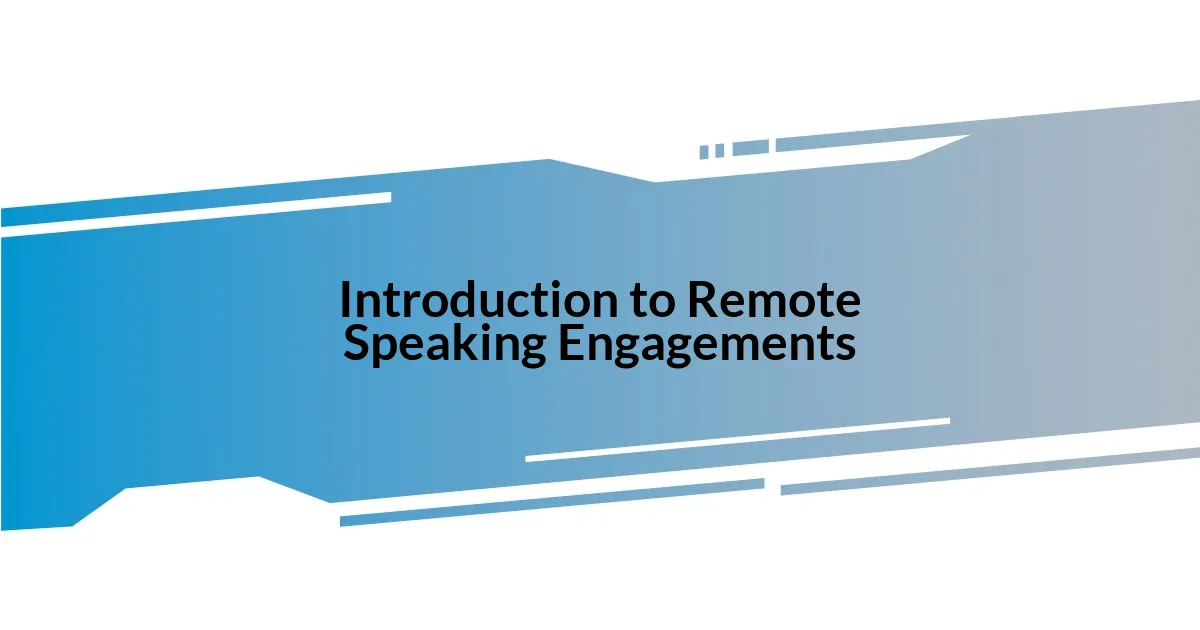
Introduction to Remote Speaking Engagements
Remote speaking engagements have transformed the way we connect and share knowledge. I remember my first virtual talk vividly—setting up my space with just the right lighting, all while feeling a mix of excitement and nerves. It was a strange blend of comfort from my home and the pressure of engaging an unseen audience. Have you ever found yourself wondering how to create that same energy in a digital space?
Over time, I’ve come to appreciate the nuances of remote speaking. Each online interaction holds its own rhythm, almost like navigating a dance where you need to feel the beat without being in the same room. I recall a specific event where I had to adjust my delivery on the fly after noticing a drop in participation. It was a wake-up call that engagement, even remotely, relies heavily on reading the virtual room.
The beauty of remote engagements lies in their accessibility. Participants who might not have been able to attend a live event can now join from anywhere in the world. I once received a heartfelt message from a viewer who tuned in from a small town; they expressed how meaningful it was for them to hear my insights from miles away. It made me realize just how powerful these virtual platforms can be for connecting with diverse audiences.
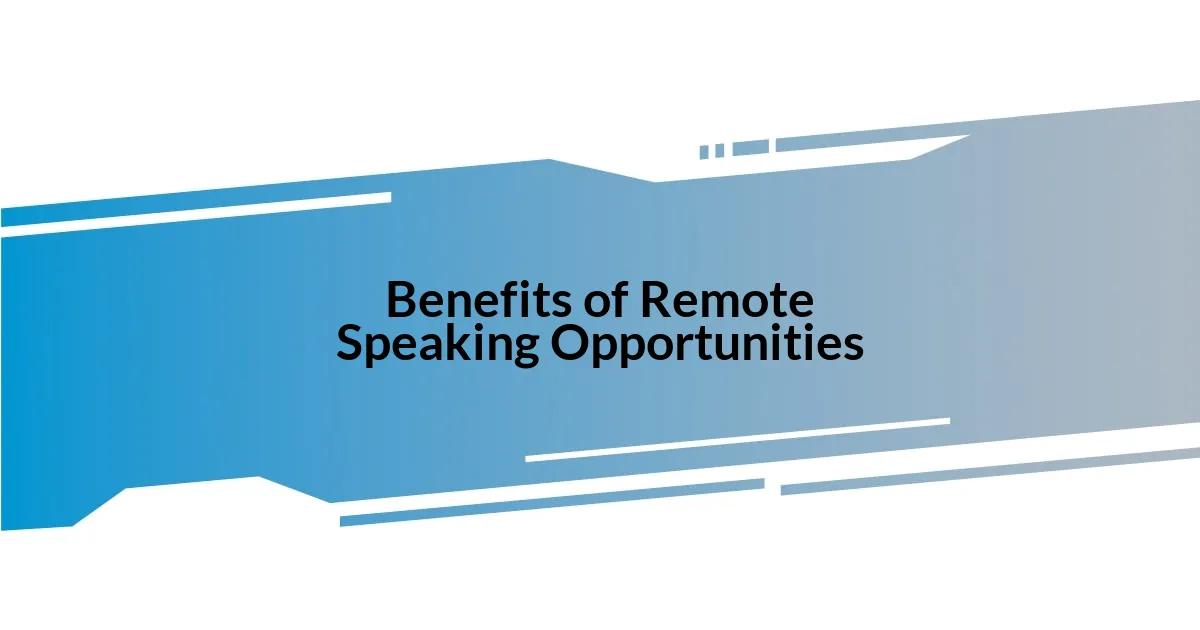
Benefits of Remote Speaking Opportunities
Remote speaking opportunities come with a plethora of benefits that are hard to overlook. One standout advantage is the flexibility they provide. I fondly recall an instance where I was invited to speak at a conference simultaneously happening in multiple time zones. Instead of the usual travel chaos, I set up my laptop in my favorite coffee shop and delivered my talk seamlessly, all while enjoying a warm cup of cappuccino. That kind of comfort is a game changer, allowing speakers to create an environment where they truly thrive.
Another significant perk is the broader reach these engagements allow. Imagine a global audience—all gathered to listen to your insights. I had the pleasure of addressing an international crowd recently and was moved by a comment from a participant in Australia who shared how my experience resonated with her. It hit me then that remote engagements break down geographical barriers, empowering voices from different corners of the world and creating a richer tapestry of shared knowledge.
Additionally, remote speaking can lead to enhanced interactivity and engagement tools that help maintain audience interest. I remember using live polls and Q&A features during one of my sessions, which sparked dynamic conversations that I was thrilled to participate in. These digital tools not only enliven the presentation but also make the experience feel more collaborative and fresh. The ability to adapt and pivot in real-time based on audience feedback is something I’ve come to appreciate greatly.
| Benefit | Description |
|---|---|
| Flexibility | Allows speakers to present from a location of their choice, creating a more comfortable environment. |
| Broader Reach | Presents to a global audience, breaking down geographical barriers and fostering diverse perspectives. |
| Enhanced Interactivity | Incorporates tools like polls and Q&As, encouraging real-time engagement and collaboration. |
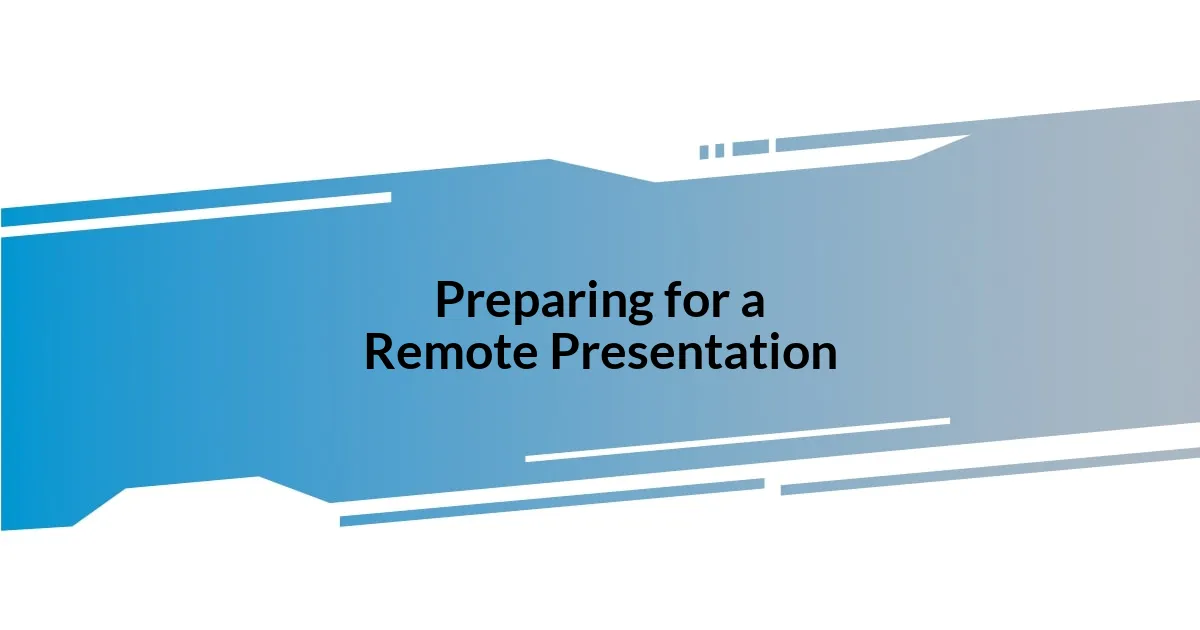
Preparing for a Remote Presentation
When preparing for a remote presentation, I find that creating a dedicated space is vital. This space should be free from distractions, allowing me to focus entirely on the audience. I once hosted a session from my bedroom, and while it felt cozy, the clutter around me made it difficult to concentrate. To enhance my presentation environment, I made some changes after that experience, like decluttering and adding a backdrop that reflected my personality without being distracting.
Here’s a quick checklist that I’ve found helpful during preparation:
- Choose Your Space Wisely: Ensure the setting is well-lit and visually appealing.
- Test Your Tech: Check your camera, microphone, and internet connection ahead of time.
- Engage with Visuals: Use slides or other media that complement your message without overwhelming it.
- Practice Aloud: Rehearse your presentation to gauge timing and clarity, just as I do before every talk.
- Prepare for Interaction: Think of questions to encourage audience participation, making the experience more immersive.
Each of these steps helps me feel more poised and ready to connect with my audience, making the overall experience enjoyable for both me and them.
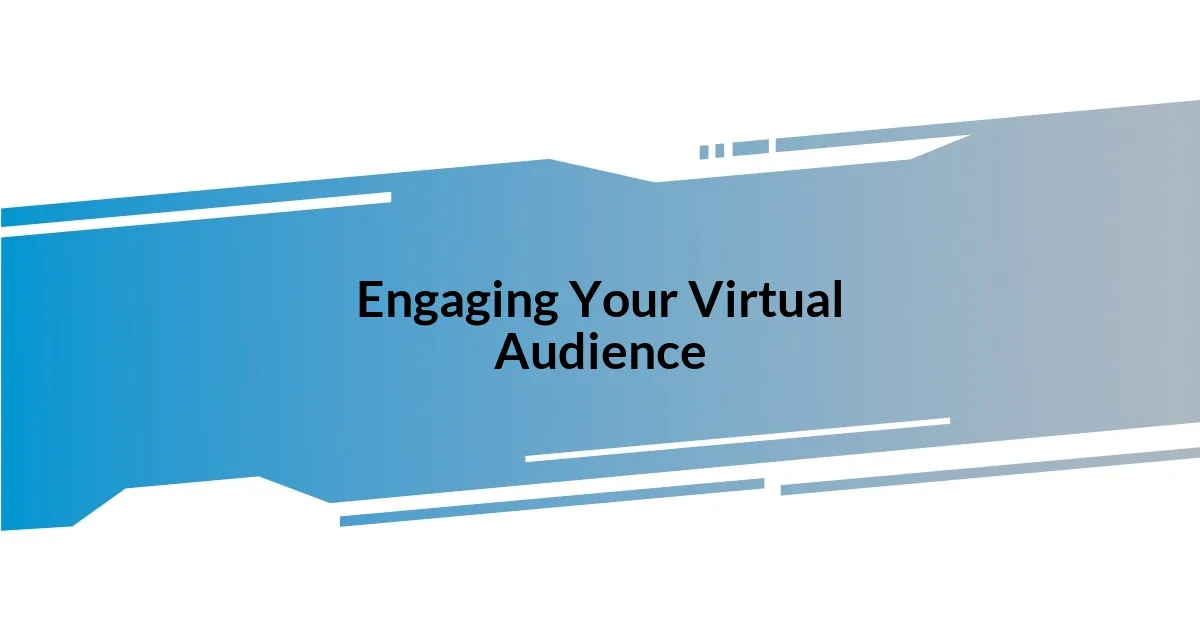
Engaging Your Virtual Audience
Engaging a virtual audience can feel daunting, but I’ve discovered that authenticity is key. One time, I started a session by sharing a personal story about my morning routine, which seemed to resonate with many attendees. Suddenly, it felt like we were having a casual chat rather than a formal presentation. This personal touch makes the experience relatable, transforming a simple talk into a shared journey.
Another technique that I’ve found invaluable is to actively invite audience participation. During a recent webinar, I posed a thought-provoking question and then waited, allowing the silence to build anticipation. When responses started to trickle in, it sparked a lively discussion that I hadn’t anticipated. I realized then that the audience craved connection just as much as I did; it wasn’t just about presenting information, but rather creating a dialogue that challenged ideas and encouraged engagement.
Lastly, don’t underestimate the power of humor. In one of my sessions, I made a light-hearted joke about the common struggles of working from home, and the audience burst into laughter. That moment shifted the energy in the room—figuratively speaking, of course! Humor can break down barriers and make participants feel more relaxed, which fosters a more engaging atmosphere. Isn’t it amazing how a little laughter can transform the mood and help others feel like they’re part of something special?
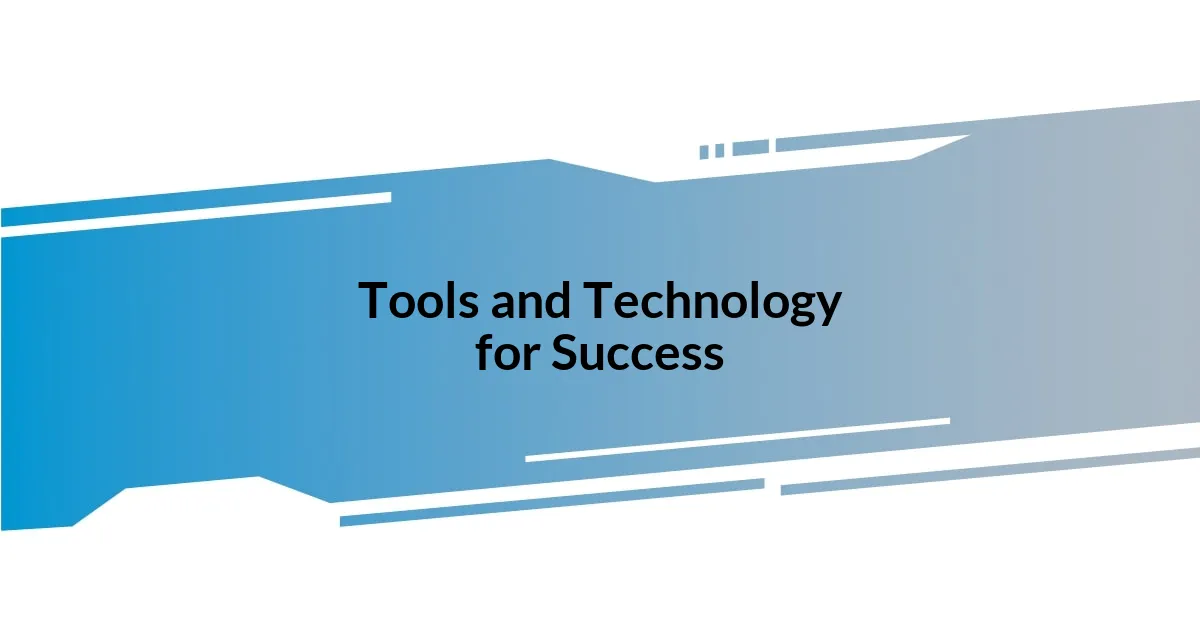
Tools and Technology for Success
In my experience, the right technology can truly elevate a remote speaking engagement. For instance, when I first began using a digital whiteboard tool, it completely transformed my presentations. I could visually illustrate my ideas in real time, which sparked excitement in the audience. Have you ever noticed how visuals can make complex information much more accessible? The collaboration I experienced was fascinating!
Another resource I swear by is a high-quality microphone. Early in my journey, I relied on my laptop’s built-in mic, thinking it would suffice. Oh boy, was I wrong! When I switched to a USB microphone, the clarity of my voice made a world of difference. I could feel the shift; the audience was not just hearing me—they were listening. Ensuring clear audio is essential for building trust and keeping the audience engaged.
Lastly, I can’t talk about tools without mentioning reliable software for managing questions and interactions. I often use dedicated platforms that allow audience members to submit queries during the presentation. Once, a participant asked a question that completely changed the direction of my talk, leading to an invigorating discussion. Isn’t that exhilarating? It reminds me that effective tools not only enhance your presentation but also foster a sense of community and collaboration.
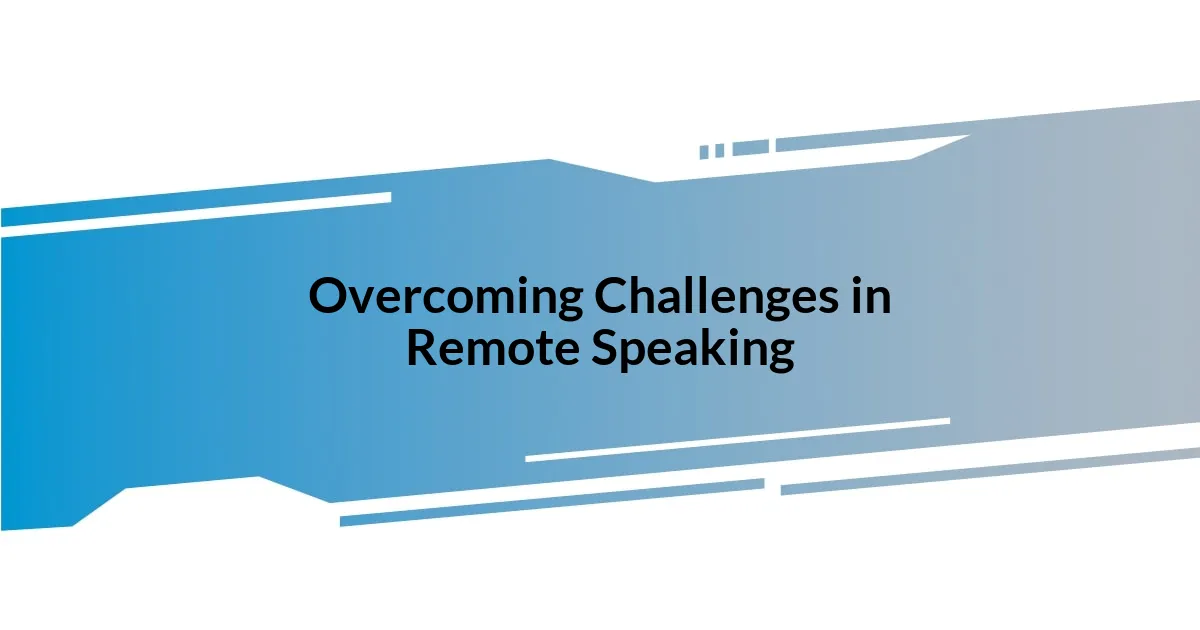
Overcoming Challenges in Remote Speaking
Overcoming challenges in remote speaking often comes down to adaptability. I remember a session where my internet connection faltered just as I was about to share a key insight. Instead of panicking, I took a deep breath and used the opportunity to engage the audience directly, asking them what they thought about the topic at hand while I waited for the connection to stabilize. That unexpected exchange turned a potential disaster into a moment of genuine interaction.
Another hurdle that I faced was the lack of visual cues from the audience. In live settings, I can read expressions and body language, but that’s tough through a screen. To bridge this gap, I’ve started using quick polls to gauge reactions. Recently, I asked attendees to vote on their favorite tips for time management in a live chat. The immediate feedback not only broke the monotony but also helped me pivot my talk based on their preferences. Isn’t it fascinating how a simple poll can create a sense of presence and connection, even from afar?
Lastly, one of the most relatable challenges I’ve encountered is managing distractions. I remember a time when my cat decided to join a session, waltzing across my keyboard. Rather than feeling embarrassed, I embraced the moment, joking about the “surprise guest” before I redirected back to my points. It’s moments like these that remind me that authenticity and spontaneity can actually enhance engagement. How do you feel when unexpected interruptions occur—do they stress you out, or can they sometimes add a unique charm to your presentation? For me, it’s become a delightful reminder that we’re all human, navigating this virtual landscape together.